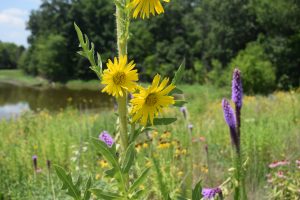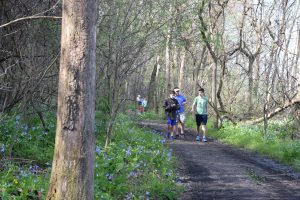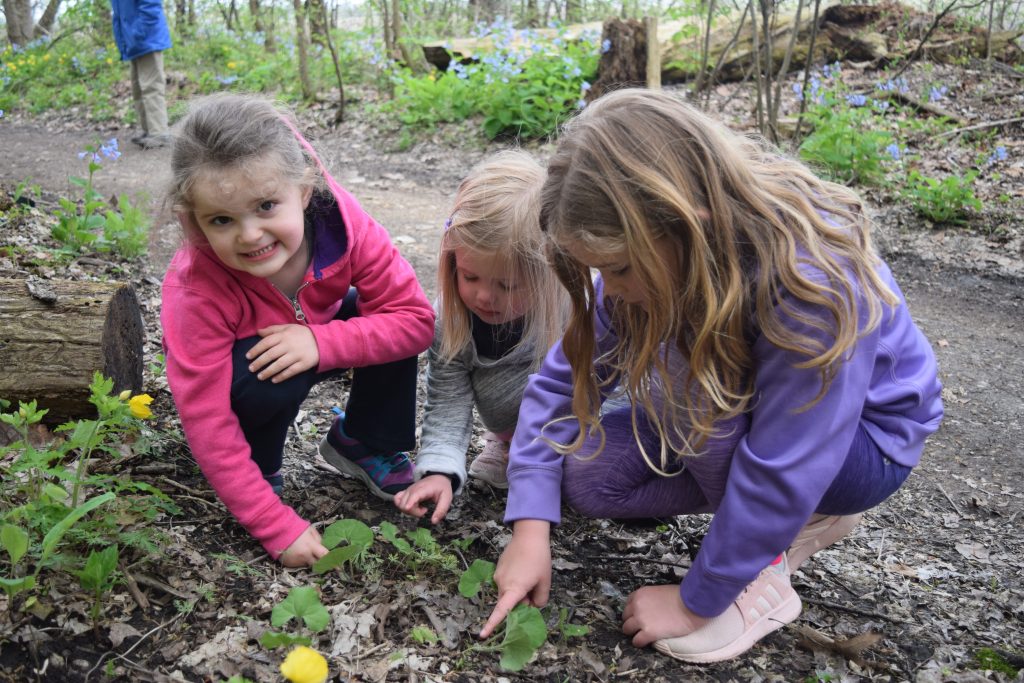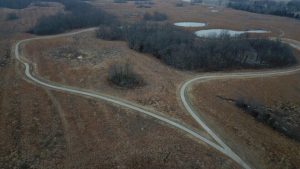A Prescription for Better Health: Get Outdoors
Spending time outdoors, especially among trees and flowers, is one of the fastest ways to improve your health and happiness. It’s been shown to improve memory, lower stress, blood pressure and heart rate, while encouraging physical activity and improving mood and mental health.

A recent study published in the International Journal of Environmental Health Research, shows just how little time it takes to reap the benefits of being outside. Spending just 20 minutes in a park is enough to improve well-being, according to the research conducted by Hon K. Yuen and Gavin R. Jenkins, both of the Department of Occupational Therapy, School of Health Professions, University of Alabama at Birmingham.
The pair asked 94 visitors to three urban parks in Birmingham to fill out a short questionnaire evaluating well-being immediately before and after their park visit. In addition, their level of physical activity was monitored by a fitness tracker. A 20.5 minute park visit indicated the highest improvement in life satisfaction of the subjects. And the amount of physical activity didn’t even factor in to the findings!
Other research suggests it is important to make time to get outdoors, maybe even essential, for human health. Psychologists and health researchers are finding more and more science-backed reasons why we should go outside and enjoy the natural world. That could mean taking advantage of hiking trails near your home, of which Monroe County has many, playing in the snow or swimming in a pond.
This is not a new concept. “To the sick, the doctors wisely recommend a change of air and scenery,” nature essayist, Henry David Thoreau wrote in Walden, published in 1854.
“Everybody needs beauty as well as bread, places to play in and pray in, where nature may heal and give strength to body and soul alike,” conservation giant John Muir wrote in The Yosemite, published in 1912.
Here are a number of reasons why getting out in nature is so important:

Walking in nature could improve your short-term memory.
In a study, University of Michigan students were given a brief memory test, then divided into two groups. One group took a walk around an arboretum and the other took a walk down a city street. When the participants returned and did the test again, those who had walked among trees did almost 20% better than before. The people who had taken in city sights did not consistently improve.
Vitamin D levels will go up.
Vitamin D is called the sunshine vitamin because sunlight hitting the skin begins the circuitous process that eventually leads to the creation of the biologically active form of the vitamin. Research is showing that many vitamins, while necessary, don’t have such great disease-fighting powers, but vitamin D may prove to be the exception. Epidemiologic studies are suggesting it may have protective effects against everything from osteoporosis to cancer to depression to heart attacks and stroke. You can make all the vitamin D your body needs by getting out in the sun a few times a week for 10 to 15 minutes.
Outdoor experiences and exercise may help fight depression and anxiety.
Physical activity has been shown to relax and cheer people up, so if being outside replaces inactive pursuits with active ones, it might also create more happy and carefree individuals.
Researchers at the University of Essex in England are suggesting that exercising in the presence of nature has added benefits, particularly for mental health. Their studies of “green exercise,” as they are calling it, dovetails with research showing benefits from living in proximity to green, open spaces.
Focus and concentration will improve.
The natural environment is inherently “restorative,” which could even apply to your attention span, or lack thereof. In a study from 1991, researchers worked to deplete participants’ ability to focus. Then some people took a walk in nature, others took a walk through the city and the rest just relaxed. When everyone got back together, the nature group scored the best on a proofreading task.

Richard Louv coined the term “nature-deficit disorder” in his 2008 book Last Child in the Woods: Saving Our Children from Nature-Deficit Disorder. Clearly a play on attention deficit hyperactivity disorder (ADHD), researchers have, in fact, reported that children with ADHD seem to focus better after being outdoors.
Spending time outdoors lowers blood pressure.
This effect has been demonstrated by a number of studies. One intensive study of 280 participants in Japan, found that along with decreasing stress hormone concentrations by more than 15%, Shinrin-yoku (taking in the forest atmosphere or forest bathing) lowered participants’ average pulse by almost 4% and blood pressure by just over 2%.
You may heal faster.
University of Pittsburgh researchers reported in 2005 that spinal surgery patients experienced less pain and stress and took fewer pain medications during their recoveries if they were exposed to natural light. An older study showed that the view out the window (trees vs. a brick wall) had an effect on patient recovery. Of course, light and window views are one thing, but adding a little fresh air couldn’t hurt and might help.

The result of all these studies and research just may be that the next time you go to the doctor with a medical problem, he might write you a prescription to take a walk in nature! If that is the case, Clifftop suggests checking out one of the many hiking trails in the area–Stemler Cave Woods Nature Preserve at 2200 Stemler Road, Columbia; Salt Lake Point Land and Water Reserve at 1309 Limestone Lane, Valmeyer; White Rock Nature Preserve at 6438 Bluff Road, Valmeyer; Fults Hill Prairie Nature Preserve at 2482 Bluff Road, Fults; and the newly opened Paul Wightman Subterranean Nature Preserve (PWSNP) at 3325 G Road, Fults.
CLIFFTOP, a local nonprofit organization, is focused on preserving and protecting area blufflands.
A version of this article appeared in the July 5, 2019 edition of the Monroe County Independent.
©2019 all content rights reserved Clifftop NFP
Comments are currently closed.
